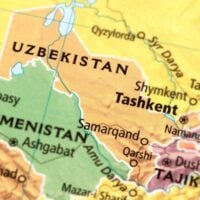Deadline: 15-Oct-24
The World Childhood Foundation is inviting applications for its grant program to inspire, promote and develop solutions to end sexual abuse and exploitation against children.
Thematic Focus Areas
- Child Supportive Environments & Relationships
- The thematic area Child Supportive Environments & Relationships refers to early interventions to prevent children from being subjected to sexual abuse and violence. Childhood’s work is evidence based regarding risk- and protective factors. A key aspect of the work is focused on one of the most important protective factors for children: a close relationship to a caring and supportive adult. Adults who see, listen and affirm children and who take action when children are at risk or have been abused. This will allow children to develop into independent, secure individuals who are able to give and receive love.
- A safe and caring family environment builds resilience against sexual abuse
- They know that globally, children are most at risk of being victimized by someone they know and in surroundings where they spend most of their childhood. They know that children in families where violence, substance abuse and mental illness are common are especially vulnerable. Children who completely lack supportive caregivers in their lives are particularly at risk of being exploited and exposed to violence and sexual abuse – such as children who have run away or been kicked out of their homes, children who are street affected and/or children who are placed in residential care. They also know that institutions are unable to meet children’s basic needs for safety and attachment.
- Early intervention for children and families
- Early intervention for children and families where there is an identified risk for violence and sexual abuse and family-based alternatives to orphanages are key components of the programs and are also relevant for the other thematic areas. For example, children who face high risks of being abused in their home-environment are also at increased risk of being abused online. A close relationship with a safe and caring adult is also key in helping children and youth who have suffered sexual abuse to recover.
- Strengthen the safety net around children
- In order to reduce the risks for abuse, Childhood actively works to strengthen safeguarding protocols in environments where children spend their time. They work to strengthen the safety net around children. This safety net is composed of both relatives, responsible adults and professionals working with children, but also other sectors that interact with children such as the travel industry, real estate companies or technology companies.
- In the over 20 years of existence, the achievements include the development of effective parenting programs in South Africa and Poland, development of family-based alternatives to residential care in Eastern Europe and Asia and new methods to reach specific risk groups piloted in Sweden.
- A safe and caring family environment builds resilience against sexual abuse
- The thematic area Child Supportive Environments & Relationships refers to early interventions to prevent children from being subjected to sexual abuse and violence. Childhood’s work is evidence based regarding risk- and protective factors. A key aspect of the work is focused on one of the most important protective factors for children: a close relationship to a caring and supportive adult. Adults who see, listen and affirm children and who take action when children are at risk or have been abused. This will allow children to develop into independent, secure individuals who are able to give and receive love.
- Child Safety Online
- The online world is rapidly changing. Children have the same rights to be online as they have to go to school or play. Children quickly adapt to new technology and new opportunities and often provide adults with advice about the digital world. The earlier children learn how to safely navigate the internet, the more likely they are to know when and how to ask for help. However, the responsibility of keeping children safe online lies with adults.
- Reaching out to vulnerable children and identifying perpetrators
- Technology and the internet help them reach vulnerable children and to identify perpetrators. The anonymity and accessibility offered by the internet is used by many offenders to their advantage. Digitization has also made it easier for people seeking contact with children for sexual purposes to have direct access to them. They know that children who are victims of online abuse suffer equally as when the abuse takes place offline. Children who are most at risk for abuse online are often less protected offline as well.
- Supporting innovative online solutions
- In 2002 – only three years after Childhood was founded – they began working to develop impactful online solutions. They have invested in groundbreaking research on child sexual abuse online. They have supported innovative online chat helpline services and groundbreaking technical solutions to identify child sexual abuse material.
- Reaching out to vulnerable children and identifying perpetrators
- The online world is rapidly changing. Children have the same rights to be online as they have to go to school or play. Children quickly adapt to new technology and new opportunities and often provide adults with advice about the digital world. The earlier children learn how to safely navigate the internet, the more likely they are to know when and how to ask for help. However, the responsibility of keeping children safe online lies with adults.
- Child Focused Response to Abuse
- The response after a child has disclosed abuse can, at best, accelerate recovery and strengthen the child’s resilience or, in the worst case, re-traumatize the child. This is why it is so important that adults and relevant authorities who meet the abused child act in a coordinated manner, with the best interest of the child in mind.
- The thematic focus area Child Focused Response to Abuse include both activities for prevention as well as providing adequate support, resources and help when abuse has taken place. It includes development of methods to identify children who are at risk, to help children disclose abuse with minimal trauma and ensure that the child is safe from further abuse.
- A child who has been abused has the right to receive the necessary support to process the abuse, to heal and strengthen resilience and prevent re-traumatization and mitigate long-term consequences.
- Avoiding re-traumatization in the legal process
- They know that children who have been sexually abused and seek help and protection may be re-traumatized and re-victimized in the process. Social and legal approaches are often uncoordinated, inadequate and/or lack child focus and rights-perspective in communication and processes affecting the child.
- By working for increased coordination and knowledge with responsible authorities, the risk of re-traumatization is reduced and the chances increase for the child to have their voice heard in the legal process.
- Reducing the risks of becoming a perpetrator is also part of this thematic area. To prevent sexual abuse from happening in the first place there is a need for evidence-based interventions for people who are sexually attracted to children.
- Avoiding re-traumatization in the legal process
Grant Periods
- Project periods start from July 1 or January 1. The first grant period is maximum 12 months, with possibilities to apply for continuation and extend the project period up to a maximum of six years.
Eligible Countries
- Cambodia, Moldova, Sweden, South Africa, Thailand, Ukraine
For more information, visit World Childhood Foundation.









































